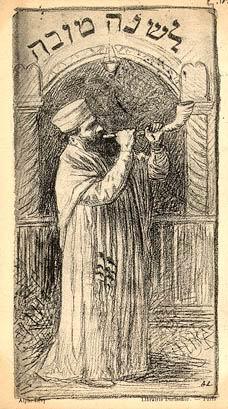 |
| https://www.flickr.com/photos/26424952@N00/14485039914 |
Grow Clarion
Cantrip
Duration: Instant / Permanent
Range: Self
Casting Time: 1 Minute
Components: V, S
Caster concentrates and grows a single keratin horn from any convenient body part from a tiny sliver to a full 16" horn. When the horn finishes growing, the caster can keep it or snap it off at will to produce a fully-functional wind instrument. If the caster doesn't concentrate for the full minute, the horn remains partially grown and is not suitable as a wind instrument. Horns produced by this spell are not useful in combat and simply snap off when placed under any notable stress.
Some casters have special skill when producing these horns and can produce horns with colors, curves, and unique patterns.
Clarion Call
Level 3
Duration: 1 Round
Range: Self
Casting Time: 1 Action
Components: V, S, Focus: Music horn or trumpet
Caster uses a horn to produce a clear, mighty note of sound audible at a distance of 6 miles. Anyone within 100' who is concentrating on a spell (including the caster) must make a DC 10 Con save to maintain concentration on the spell. Anyone within 30' attempting to cast a spell during the spell's effect must make a Con save vs the caster's save DC or be unable to cast their spell this round. Deaf creatures or creatures wearing hearing protection are immune to this effect. Using this spell is liable to provoke wandering monster checks, dislodge unstable masonry, cause avalanches, or other side effects.
 |
| https://www.flickr.com/photos/internetarchivebookimages/14586315900 |
Level 4
Duration: Instant
Range: 90' Cone
Casting Time: 1 Action
Components: V, S, Focus: Music horn or trumpet
Caster produced a series of pinging notes from a horn that rattle teeth and windows. Reduce a 90' cone of biological material to dust as long as the material is dead (not undead) and not held or worn. Magical items get a saving throw. What counts for this spell?
- Tapestries - yes
- Clothing - not if worn, yes if unattended.
- Wood chests, doors, and critical support beams - yes
- Rocks, dirt, and living bugs - no
- Food - yes, unless alive
- Tree roots - no, unless dead
- Ghosts and animated skeletons - no, spell does not effect undead
- Inanimate skeletons - yes
- Log cabins and stockades - yes
 |
| Alphonse Lévy [Public domain] |
Level 1
Duration: Instant
Range: 30' Cone
Casting Time: 1 Action
Components: V, S, Focus: Music horn or trumpet
Using the horn, the caster blows several notes outside the range of humanoid hearing while also looking through the horn. The caster learns the contents of 2 horizontal bands in the cone that could be perceived with blindsight by rolling on the below table twice and rerolling duplicates:
1) 5'
2) 10'
3) 15'
4) 20'
5) 25'
6) 30'
The bands are always horizontal / perpendicular to the orientation of the cone / spell emanation.
The noise emitted as part of this spell is not audible to humanoids, but is audible to any plausibly aware creature, such as bats, whales, or creatures with hearing-based blindsight.